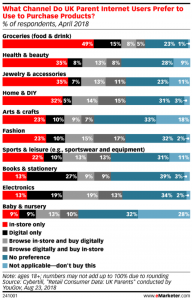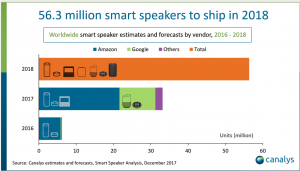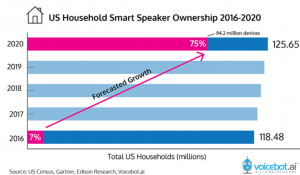
Why people buy crappy sounding systems
(and how they could test them before buying)…
Listening or measuring
A decision to buy a sound system is usually based on listening experience and merely on measurements. This is probably true for rather high-end and expensive audio systems. Spending a fortune on an audio system involves passion, time and effort as the investment needs to be justified. Measurements influence only to some degree this justification.
The truth is, people buy sound systems online based on price, specs and recommendation of other users or sales platforms.
Online sales increase dramatically for most products.

For electronics, which might include some of the audio systems, this chart shows only 23% have a preference to buy in-store.
HiFi looses against usability
Rather lower-end systems, wireless systems and most recently speech-controlled systems dominate the audio system market overall in terms of product sales.
So called “Bluetooth speakers”, mobile, AC powered audio systems have more than tripled their sales volumes in the US in the last five years. Smart Speaker growth is even far more overwhelming.


If the projections come true, more than 70% of the households will have smart speakers. Hopefully the high-end niche will remain. Smart speaker growth gives reason to believe, speech control, i.e. usability, is more important than the sound quality.
Why higher streaming quality
Smart speaker use streaming as a source medium. Streaming services provide sources with different quality. CD as a source is accepted to be a standard quality. MP3 with higher compression rates is rather below a CD standard. High resolution or analog sources like vinyl, in many cases, are deemed to be a better quality source.
It requires very good audio systems to take an advantage of a better quality source than standard CD. Such HiFi and high-end audio systems meet some standard audio industry criteria. They aim to reproduce the whole audio frequency range with low aberration. Also, they output lower or aurally weighted distortion and have a minimum of two separate speakers to allow for stereo sound. Too much digital interference to the music signal can have a negative influence on the output sound quality. Hifi systems allow playback with realistic loudness. Without this, the dynamic range of a good recording, even in only standard CD quality, cannot be reproduced.
The TestHiFi initiative
These trend indications basically tell, people buy more online, with more focus on usability, using information they comfortably get to select the products.
But, where is the trustable sound quality label, standard, criteria or test that one can rely on when buying online?
TestHiFi is the initiative to bring sound quality back as the selection criteria for the mass of sold audio systems.